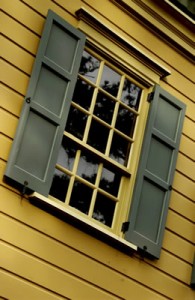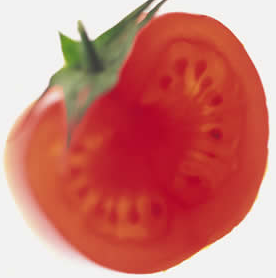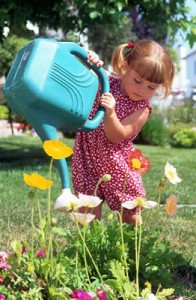Is Your Home Ready for Summer?
June 25, 2015 by
Filed under Blog
With the heat of summer upon us, it’s important to get outdoor work done early. It’s easy to sleep in on the weekend and not get  outside to mow that lawn until after noon, but on a really hot day, that can be dangerous. Heat stress and dehydration can cause a trip to the emergency room if you’re not careful. Plan ahead when doing anything on a
outside to mow that lawn until after noon, but on a really hot day, that can be dangerous. Heat stress and dehydration can cause a trip to the emergency room if you’re not careful. Plan ahead when doing anything on a
hot day and remember to drink lots of water.
Last time, we focused on how to save water and get ready for summer in your yard. Once you’ve got that all set, it’s time to take a look at how to summerize the house.
Summerize… and the Livin’ is Easy. In our area, we have all kinds of homes, from prefab modulars, to old bungalows, to modern marvels of efficiency. Most were built in the 1940s and 50s, so they’re a little more energy conscious than a drafty old Victorian, but they usually need extra attention because of their age and single-pane aluminum frame windows.
Summerizing your house is like winterizing, except the temperatures are reversed. This time, you’re trying to keep your cool air in and the heat out. So, just like winter heat loss can be a problem in your attic, so can heat radiation from that asphalt shingle roof you may have. Make sure the space between your roof and ceiling is well insulated, no matter how small that space may be! An attic fan that kicks on when it gets too hot up there is another smart investment to keep heat out of your ceiling space.
Your Biggest Fan
Speaking of fans, how about your cooling? No matter if you have an air conditioning unit or an evaporative cooler, change your filters or pads. Clean filters will help your AC run more efficiently and prevent it from overheating on really hot days. Evaporative cooler pads can get crusted with minerals from the water that keeps the air cool, and clog with dust and pollen, just like an AC filter.
Somebody Crack a Window!
Here’s a simple tip to reduce your cooling costs: Open up your windows at night to let cool air in, especially on the north side of your house. Then, around mid-morning, close everything back up to keep the day’s heat out. If you have double-hung windows (that  aren’t painted shut), you’re in luck. These were designed in the days before AC when people would open the top and bottom windows a couple of inches, and the escaping hot air near the ceiling would create an up-draft that pulled cool air in the bottom. Transom windows over a door served much the same purpose, but most of these are gone or painted shut today.
aren’t painted shut), you’re in luck. These were designed in the days before AC when people would open the top and bottom windows a couple of inches, and the escaping hot air near the ceiling would create an up-draft that pulled cool air in the bottom. Transom windows over a door served much the same purpose, but most of these are gone or painted shut today.
If you need help getting those painted windows free again so you can get some fresh air, give us a call! We can also help out with those AC filters or cooler pads, install an attic fan, and check out how your insulation is doing… especially if critters have been walking around up there and squashing it down… which is a whole other problem!
The Fix-it Professionals are ready to help! Read on for our latest special.
?>
Is Your Yard Ready for Summer?
June 11, 2015 by
Filed under Blog
This year, it seems like the drought and heat are getting worse by the minute. So, let’s make sure your yard is ready to withstand them both. Some changes may be needed help your yard look its best as we head into the heart of summer. Here are some tips to help you get ready.
Time for a Check-Up
A hidden problem that can add a lot to your summer water bill is leaky pipes and faucets. Sure, that little dribble coming from the outdoor faucet handle doesn’t look like much, but it can really add up, and everybody needs to do their part to conserve water. It might be something simple, like an O-ring, or it could be a flaw in the faucet’s metal caused by age or weather. Check every outdoor faucet and pipe to be sure none of your precious water (or money) is leaking away.
the outdoor faucet handle doesn’t look like much, but it can really add up, and everybody needs to do their part to conserve water. It might be something simple, like an O-ring, or it could be a flaw in the faucet’s metal caused by age or weather. Check every outdoor faucet and pipe to be sure none of your precious water (or money) is leaking away.
How About Your Hoses?
If hoses are left outside during the winter, they might be running into trouble too. The weather can crack and age the hose itself as well as the O-ring inside the brass coupling that screws onto the faucet. Sometimes the threads at the ends of your hose can get squashed out of shape (ever run over a hose left in the driveway?). This makes for a leaky connection at one or both ends. If you use screw-on sprinkler heads, check those O-rings for cracks and weathering too.
Don’t Stress Out
It’s still a bit early for heat and drought stress, but now is the time to take a look at your plants and see how they’re doing. Don’t forget your trees, too! If you already have yellow leaves on your shade trees in June, rather than October, that could be a sign of stress. If you have a vegetable garden, check the condition of your plants both during the heat of the day and in the evening. For example, wilting in the heat of the day is normal for a zucchini plant, but if it stays wilted after the sun has gone down, you’ve got a problem.
Be a Drip
I mentioned drip irrigation a little bit last time, but if you want to have veggies in the middle of a drought (and you want your beefsteak tomatoes to be bigger than a golf ball), this is the best way to go. However, drip irrigation doesn’t just mean the  little drippers most people have seen. There are also tiny sprinklers, “leaky hose” that lets water ooze out along the length of it, misting heads, and all kinds of different ways to get the water right where it’s needed instead of using a wasteful overhead sprinkler.
little drippers most people have seen. There are also tiny sprinklers, “leaky hose” that lets water ooze out along the length of it, misting heads, and all kinds of different ways to get the water right where it’s needed instead of using a wasteful overhead sprinkler.
There are lots of books on how to get started with a drip system, but it’s probably best to consult an expert if your garden is more than just a few pots, or a couple of straight rows of veggies. You’ll need to think about if your garden is on a slope, because that affects the water pressure in the hoses, and you may also want advice on the best kind of timer to install if you want to do a large system with more than one watering zone.
Need help installing that raised bed garden? (It’s not too late!) Have you decided it’s time for drip irrigation? Maybe you have leaky plumbing in the garden. Don’t try to do it yourself! The Fix-it Professions are ready to help! Read on for our latest special.
?>A Backyard Haven for Mom, Part 2
June 2, 2015 by
Filed under Blog
Continuing the theme of the “Mother’s Month” garden (because one day isn’t enough!), let’s take your new oasis from the seeds of an idea to full bloom. Now that summer is right around the corner, there’s no time to waste. Let’s get growing!
Check Those Roots First
It’s still possible to grow a garden from seed at this late date, but if you really want a lush oasis that will look terrific from now until late fall, buying fully-grown plants from your local nursery is your best bet. Healthy plants with a strong root system will grow faster and withstand severe summer heat and drought better. Don’t be afraid to (carefully) slide a plant out of its pot and look at the roots. If it’s nothing but a pot-bound, hard, white mass, or if it has only a few weak, tiny, rotting roots, pass them by-they will never do well and are a waste of money.
 Water, Water… Nowhere, Actually
Water, Water… Nowhere, Actually
It’s smart to consider drought-tolerant plants whenever possible. Even in wet years, these hardy performers will do well in our area with little or no care, so you can just relax and enjoy their beauty, year after year. Lavender, different varieties of sages, daffodils, California fuchsia, artemisia, yarrow, and of course California poppies will all bloom reliably every year in our region without any extra water once established.
Another way to keep your garden green with little water is to install a drip irrigation system on an automatic timer. Once in place, all you need to do is check that the water is flowing correctly-no more dragging wasteful sprinklers around, and there’s no chance of problems if you go on vacation. The types and positions of the drippers and sprinklers and timers are different for every garden, so you may wish to work with a professional on this complicated task.
Waves of Colors and Shapes
Research in advance when your plants will bloom, and try to use different varieties that will give you a color show at different times so you don’t end up with an all-or-nothing situation. Right now, the spring bloomers are giving way to the summer annuals and bigger perennials, but what about fall? Chrysanthemums come in lots of shapes and colors, and is usually a perennial in our area. If you can see your new garden area from your house, add bright red pyracantha berries, a miniature citrus tree, or the twisty naked branches of a corkscrew hazel for a great looking space in winter too.
Keeping it Private
Of course, enjoying the garden in person is the most important thing. Besides comfortable and well-placed seating, youmay need to invest in building privacy fencing, or in plants that will do the same thing. Some types of bamboo are dense and fast-growing living screens, but they can also be a problem. A great way to keep bamboo from taking over your yard is to build a planter that’s half above ground, and half buried, to prevent the roots from escaping (much like Bermuda grass does). Trellises and other types of fences that allow plants to cover them are another beautiful choice. Try a mix of early annual climbers, like sweet peas, and summer vines, such as grapes or Carolina jessamine, to keep things looking lush and full all season long.
If you need help putting up a trellis or fencing, installing drip irrigation, or corralling your bamboo grove, call The Fix-It Professionals. We love building raised beds, so why do it yourself? Let us help you create your new private garden oasis! Read on for our latest special.
?>